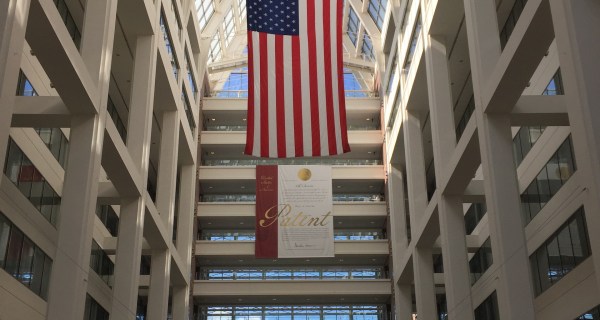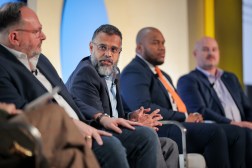- Sponsored
- AI
Reimagining search: How AI and Google Search turbocharges patent examinations at USPTO

One of the many challenges government agencies and their employees face is finding the information they need, when they need it, and having confidence the information is correct, up to date and they haven’t missed essential data.
While advances in search technology have provided government employees with more powerful search tools, the dramatic growth of multi-modal data in all its forms has made search, and the ability to find the right information in petabytes of datasets more challenging than ever.
That was the challenge the United States Patent and Trademark Office and its patent examiners were facing, setting the stage for taking a new approach to search, enabled by advanced AI technologies.
In a strategic partnership with Accenture Federal Services and Google Cloud, USPTO has developed and implemented a comprehensive system to refine its search mechanisms. This initiative has been about upgrading the traditional examination protocols, providing examiners with new, swift and precise search capabilities that respond to the complexity and scale of modern innovations.
At Google Cloud Next ’24, Jonathan Horner, supervisory patent IT specialist at the U.S. Patent and Trademark Office and Ian Wetherbee, software engineer at Google, joined Anna Hoffman, USPTO lead at Accenture Federal Services, on stage to discuss the agency’s ambitious efforts to leverage AI.
The USPTO’s initiative highlights a broader challenge public agencies face in reviewing mountains of documents, artifacts and existing application decisions—and identifying where else in the world similar work may be underway and what’s verifiable. Until recently, Generative AI platforms had limited ability to provide grounded or verifiably sourced content in real time from the Internet.
“One of the things we recently announced is Grounding with Google Search,” said Katharyn White, head of public sector marketing for Google Cloud in a podcast from Google Cloud Next.
“Grounded means we know the source that the AI is using to come up with the answer. It’s grounded in a data source that you can check and ensure that is giving you the results that you want. And we’re making that easier.”
For the USPTO, the need for advanced search capabilities meant first tackling its internal data retrieval and analytics capabilities.
Horner detailed the constitutional roots of patent law and the monumental task of examining each application against all human knowledge. “That’s a lot of information to go through… You’re looking for a needle in a stack of other needles,” Horner said, explaining the enormity of their challenge.
Traditionally, patent examiners relied on Boolean search techniques. However, with the exponential increase in information, these tools became increasingly inadequate for maintaining the high standards required for U.S. patents, said Horner. To address this, the USPTO has turned to AI, deploying tools in production that are not only efficient but also explainable, respecting the office’s duty to the public and applicants.
Hoffman discussed the journey starting in 2019 with a small prototype aimed to demonstrate that AI could meet these challenges. She mentioned conducting dozens of interviews and workshops, deploying a modern Google infrastructure and launching a prototype within three months—a pace unheard of in federal government operations. The prototype focused on finding prior art — evidence that an invention might already exist — that examiners might likely have missed otherwise. The pilot paved the way for production features like showing “more like this” documents, enabling examiners to find similar documents more effectively.
“This feature became used by examiners immediately, which allowed us to run with a much bigger and more robust AI user interface directly similar to the examiner search system called Similarity Search,” Hoffman added.
Google’s Wetherbee emphasized the necessity of “supporting the full Boolean search syntax as the model’s input.” A robust data collection process involved over a million data points from human raters and a pattern corpus of over 170 million documents.
“There are hundreds of millions of citations inside patterns. It’s a huge corpus of over two terabytes of text content…We were able to process all of this human-rated data and the pattern data using Google infrastructure and turn that into training data to train our models,” said Wetherbee.
Horner reiterated that despite technological advancements, the examiner is “still in the driver’s seat. All of these tools are based on an examiner’s ability to guide the AI towards what it is looking for, and that’s very important to us.” It’s a symbiotic relationship where AI extends the reach of human capability rather than replacing it.
Adopting these AI tools signifies a broader shift within the federal landscape—embracing cutting-edge technology to ensure accuracy and efficiency in governmental functions. It also poses an example for other federal agencies that are considering a similar path toward digital transformation.
Learn more about how Google Public Sector can help your organization “Kickstart your generative AI journey.”
This article was produced by Scoop News Group and sponsored by Google Public Sector. Google Public Sector is an underwriter of AI Week.






